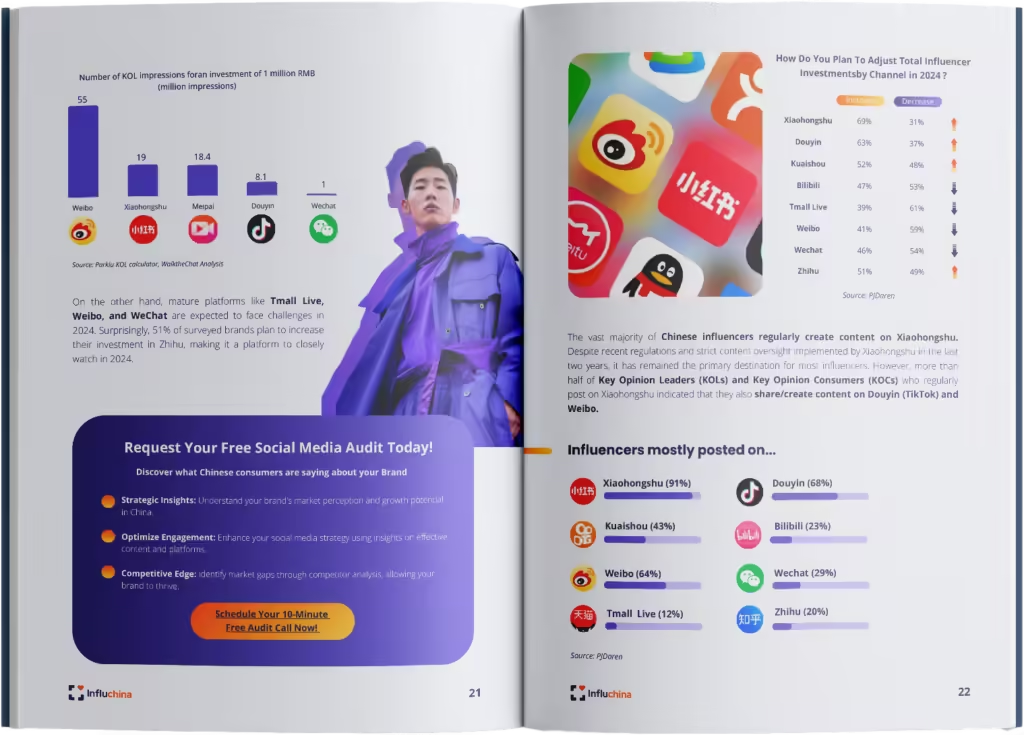TL;DR | Rednote Tourism Marketing
Rednote (Xiaohongshu) is indispensable for Chinese travel marketing, combining social discovery and e-commerce to influence affluent millennials and Gen Z travelers. Brands must collaborate with KOLs and KOCs, produce visually rich and informative content, and embed SEO and hashtag strategies to ensure visibility in searches.
Focus on user-generated content (UGC) and adopt the KFS model (KOL, Feed, Search) to maximize reach and conversions, while tracking performance through platform analytics to refine your campaigns.
Social media dominates as a source of travel inspiration (83.2%), outranking OTAs, advertising, search, and word-of-mouth. This underscores why travel brands targeting Chinese tourists must prioritize social content, influencer engagement, and OTA visibility. Among outbound Chinese travelers in December 2024, 74.4% used Douyin and 66.2% used Rednote.
Key steps:
Partner with authentic KOLs and KOCs whose voice matches your travel niche.
Use targeted keywords and layered hashtags to boost searchability.
Create high-quality images, short videos, and detailed captions with practical travel tips.
Encourage travelers to share authentic UGC to build trust and credibility.
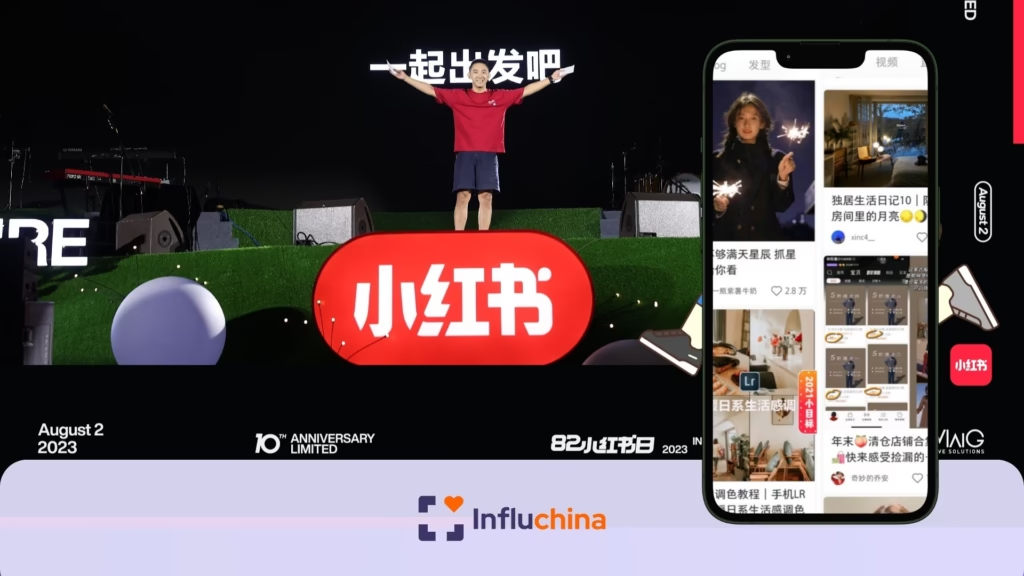
In today’s digitally-driven travel landscape, Rednote (Xiahongshu) has rapidly emerged as an essential marketing platform for brands aiming to attract Chinese tourists. With over 300 million users, predominantly young, affluent Chinese travelers, Xiaohongshu uniquely blends vibrant social media interactions with robust e-commerce functionalities. According to Sekkei Digital Group, travel-related content on Xiaohongshu surged by an impressive 273% in 2023 alone, underscoring the platform’s significant role in influencing travel planning.
1. What Is Rednote and Why It Matters for Tourism Brands
Xiaohongshu has established itself as a powerful travel guide among its 300 million users, mainly comprising young, affluent Chinese travelers. travel-related content surged by an impressive 273% in 2023 alone, reflecting the platform’s influential role in travel planning. Its hybrid nature, combining features of Instagram, Pinterest, and Amazon, makes it ideal for users seeking inspiration, detailed guides, and trustworthy peer reviews before booking their trips.
Xiaohongshu is particularly popular among affluent Chinese millennials and Gen Z users, who together constitute nearly 70% of its user base. Over 80% of Chinese travelers research destinations and services online prior to making travel decisions, frequently turning to Xiaohongshu for reliable, engaging travel information. Travel-related posts consistently rank among the top five most popular content categories on Xiaohongshu, further highlighting its importance and potential for travel industry marketers.
This article offers detailed insights and practical guidance on effectively leveraging Xiaohongshu marketing strategies for the travel industry, empowering brands to substantially enhance their online visibility, user engagement, and booking conversions.
Social Media Usage & Travel Inspiration Trends Among Chinese Outbound Tourists (Dec 2024)

Share of outbound Chinese travelers using social media platforms (top) and key sources of travel inspiration (bottom) — data from China Tourism Industry Annual Report 2024
How Chinese Travelers Find Travel Inspiration
According to the China Tourism Industry Annual Report 2024, social media has become the top source of travel inspiration for outbound Chinese travelers, cited by 83.2% of respondents.
It outperforms OTA platforms (60.1%), online advertising (38.2%), search engines (36.8%), and even recommendations from family and friends (29.7%).
This data clearly shows that travel discovery among Chinese consumers now happens primarily within social ecosystems rather than through traditional search or paid media.
For tourism brands, destinations, and hotels, this shift means that inspiration must be created — not just found — within social platforms where travelers spend their time exploring content, not searching keywords.

Social media platforms used by Chinese outbound traveleers in 2024 — data from China Tourism Industry Annual Report 2024
Discover Key Insights in the Chinese Outbound Tourism Report
To help businesses navigate this evolving landscape, InfluChina has prepared the Chinese Outbound Tourism Report 2024 — a comprehensive market analysis covering traveler demographics, social media behavior, and the platforms shaping global travel decisions.
This exclusive report reveals how Chinese consumers use social media for trip inspiration, the rise of Gen Z travelers, and the marketing strategies driving post-pandemic recovery in outbound tourism.
Explore data-backed insights, platform trends, and best practices to attract and engage Chinese travelers effectively.
2. What Are the Best Rednote Marketing Strategies for Travel Brands?
To fully capitalize on Xiaohongshu’s potential, travel brands must implement comprehensive strategies that blend authenticity, targeted influencer partnerships, and visually appealing, informative content. Below, we explore key strategic areas that empower brands to effectively engage with Chinese travelers, build trust, and drive conversions on this influential platform.
2.1 Strategic Influencer and KOC Collaborations
Xiaohongshu Influencer marketing remains a cornerstone of successful Xiaohongshu campaigns. Key Opinion Leaders (KOLs) and Key Opinion Consumers (KOCs) significantly shape travel decisions through genuine recommendations. Travel brands should:
- Partner with influencers whose style, values, and content resonate deeply with target audiences.
- Leverage KOCs to provide relatable, authentic reviews and foster community engagement.
2.2 Advanced Hashtag and SEO Strategies
On Xiaohongshu, effective use of hashtags and keyword optimization is crucial, as the platform functions similarly to a search engine. Users actively search for travel inspiration, destination reviews, and travel tips through specific keywords. Therefore, strategically positioning keywords and using targeted hashtags can dramatically enhance content visibility and user engagement. Travel brands should:
- Conduct thorough keyword research to identify popular and relevant search terms that align with their target audience’s interests and travel aspirations.
- Integrate keywords naturally and strategically into titles, descriptions, and posts to ensure maximum searchability without compromising readability or authenticity.
- Use niche and trending hashtags to reach specific audience segments, tapping into ongoing conversations and popular travel trends.
- Monitor and analyze keyword and hashtag performance regularly, adjusting strategies based on user engagement metrics and evolving search behaviors.
- Leverage branded hashtags to build consistent brand recognition and facilitate easier discovery of their unique travel content.
2.3 Visually Captivating and Informative Content
Xiaohongshu prioritizes visually appealing, highly engaging content. Effective content includes:
- High-quality vertical images (3:4 ratio) showcasing aspirational scenes.
- Short videos and immersive stories highlighting local experiences, hidden gems, and cultural insights.
- Detailed, text-rich captions providing valuable travel tips, itineraries, and practical information.
2.4 Encouraging User-Generated Content (UGC)
Chinese travelers place significant trust in peer-driven recommendations, making User-Generated Content (UGC) particularly influential in their decision-making process. Authentic reviews, personal stories, and real-world experiences shared by fellow users resonate deeply with travelers, directly influencing their choices. To effectively leverage UGC, travel marketers should:
- Encourage travelers to share detailed and authentic reviews, highlighting personal experiences, practical tips, and genuine impressions of destinations or services.
- Organize contests or giveaways to incentivize the creation of high-quality, engaging content, motivating users to actively document and share their travel journeys.
- Actively engage with outstanding UGC, commenting, reposting, or featuring exceptional content to amplify its reach and enhance the credibility and attractiveness of the brand through genuine social proof.
By strategically utilizing UGC, travel brands can foster deeper connections with Chinese audiences, significantly strengthening trust, authenticity, and overall brand appeal.
2.5 Implementing the KFS (KOL, Feed, Search) Strategy on Xiaohongshu
An effective approach to Xiaohongshu marketing is the strategic implementation of the KFS (KOL, Feed, Search) model. This three-fold strategy leverages key elements of the platform to ensure comprehensive visibility and maximum user engagement:
- KOL Collaboration:
Partnering with Key Opinion Leaders (KOLs) enables travel brands to tap into authentic storytelling and significantly expand their reach. Influencers share genuine experiences, creating relatable content that resonates deeply with the target audience, fostering trust and inspiring travel aspirations. - Feed Advertising:
Utilizing targeted Feed Ads allows brands to reach specific demographics based on user interests, location, or browsing history. Carefully crafted visual ads appearing seamlessly within user feeds help drive awareness and direct traffic to detailed travel content, boosting overall visibility. - Search Optimization:
Active and ongoing optimization for search visibility is critical, as Xiaohongshu users frequently employ the platform as a search engine. Travel marketers should continuously monitor and strategically optimize trending keywords, hashtags, and user interests, ensuring their content remains highly discoverable and relevant in user searches.
By integrating these three components—KOL partnerships, targeted feed advertising, and rigorous keyword optimization—brands can effectively amplify their presence, enhance engagement, and generate stronger travel conversions on Xiaohongshu.
3. Examples of Successful Travel Rednote Campaigns
The following Xiaohongshu travel case studies highlight how leading destinations and hospitality brands have successfully engaged Chinese travelers through localized storytelling and influencer-driven strategies.
Visit Saudi
InfluChina partnered with Visit Saudi to launch the “Unreal Calendar” campaign, showcasing Saudi Arabia as a modern and inspiring destination for Chinese travelers. The campaign ran across Xiaohongshu, Douyin, and WeChat, using authentic influencer storytelling to shift perceptions and spark curiosity.

Objectives
Build awareness of Saudi Arabia among outbound Chinese travelers.
Inspire engagement through real influencer experiences.
Strengthen positive sentiment and cultural relevance.
Strategy & Execution
InfluChina selected eight Chinese travel and lifestyle influencers who had visited Saudi Arabia or specialized in international travel. Each shared personalized travel diaries aligned with the “Unreal Calendar” concept — twelve months of extraordinary experiences across Saudi’s cities and landscapes.
Content combined:
Xiaohongshu travel notes and photo diaries.
Douyin vlogs and short storytelling videos.
WeChat long-form posts highlighting itineraries and cultural insights.
InfluChina managed influencer selection, creative adaptation, and performance tracking to ensure cultural alignment and measurable outcomes.
Results
Over 5M views across platforms in the first 30 days.
7.9% engagement rate, above tourism benchmarks.
+42% growth in positive mentions of Saudi Arabia on Xiaohongshu.
The campaign effectively redefined Saudi Arabia’s image for Chinese audiences — from a distant destination to a vibrant, modern travel experience.
Phantom Experiences in Australia
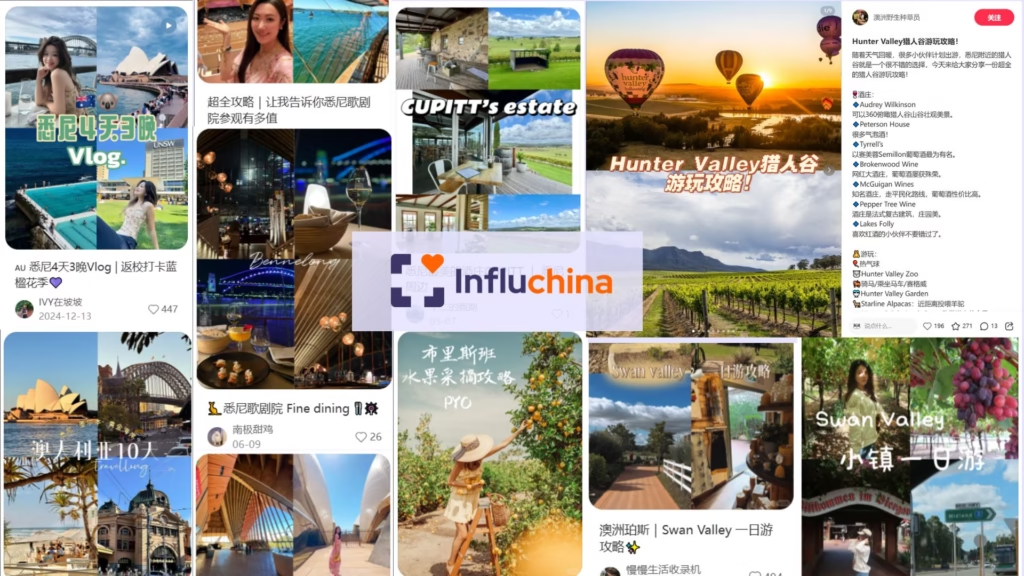
Objective:
Position Australia as a premium destination by showcasing luxury and exclusive travel experiences to affluent Chinese travelers.
Strategies:
- Micro-influencers (KOCs): Collaborated with 20 influential Chinese travelers, each with follower counts ranging between 10,000 and 50,000. These KOCs experienced carefully curated “phantom experiences,” such as private dinners at the iconic Sydney Opera House, exclusive VIP tours of renowned Australian vineyards, and other high-end personalized experiences.
- Content Creation: Participants documented their unique experiences through engaging, authentic content:
- Detailed guides and reviews on Xiaohongshu offered deeper insights, practical travel tips, and personal anecdotes that resonated strongly with users searching for credible and relatable recommendations.
Results:
The campaign was highly successful, generating over 15 million views across both Xiaohongshu and Douyin platforms, along with an impressive 18% increase in bookings for premium Australian travel experiences in 2022. This clearly highlights the efficacy of combining targeted KOC collaborations with strategic content distribution, significantly driving engagement, enhancing brand positioning, and translating online interest into tangible travel bookings.
PortugalSecretSpots
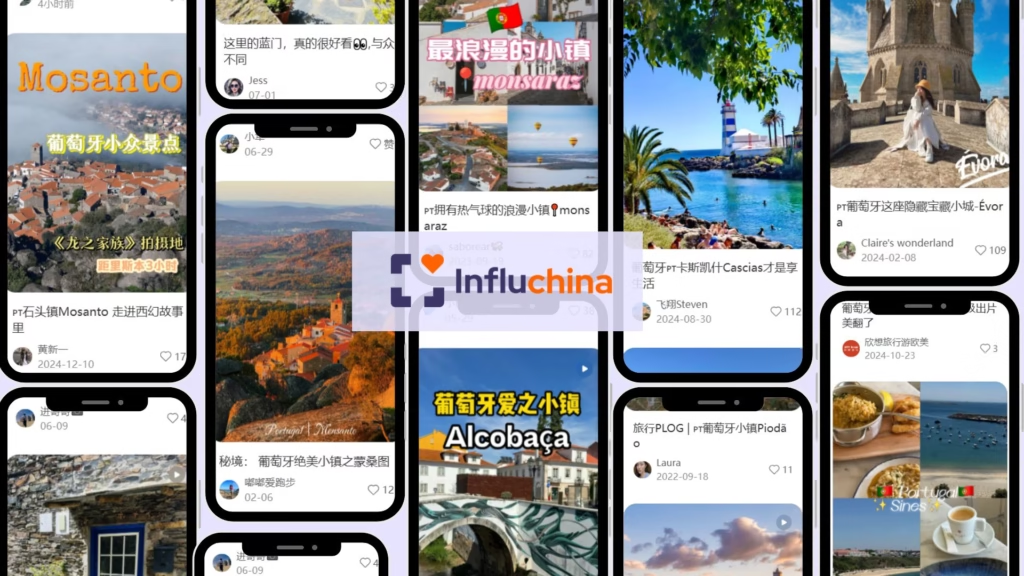
Objective: Position Portugal as an attractive, worthy destination beyond popular cities like Lisbon and Porto.
Key Strategies:
- Keyword Optimization: Targeted popular search terms (“turismo europeo poco masivo,” “lugares fotogénicos en Portugal”) and crafted practical, engaging titles like “5 Secret Portuguese Towns Chinese Travelers Don’t Know.”
- Hierarchical Hashtag Use: High-volume hashtags (#PortugalTravel, LisbonTravel) combined with niche tags (#HiddenGems, #PhotoSpots, #PortugueseFood) for better content segmentation.
- Authentic KOC Content: Collaborated with highly-engaged travelers (5k–50k followers), sharing practical details like exact locations and budget tips.
- Comprehensive Carousel Guides: Created visually appealing carousel posts with detailed itineraries, updated prices, and clear CTAs prompting users to save the content.
Results (2023):
- Over 12M hashtag impressions (#PortugalSecretSpots).
- 35% increase in interactions compared to previous campaigns.
18% rise in inquiries to Chinese travel agencies for custom Portugal itineraries.
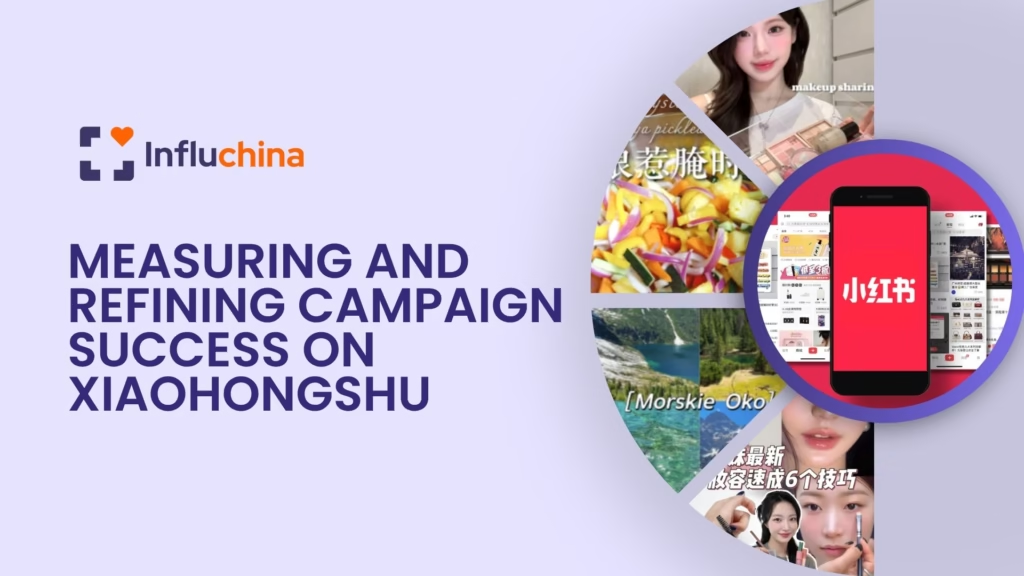
4. How to Measure the Success of a Rednote Marketing Campaign?
Effectively evaluating campaign success on Xiaohongshu is crucial to ensure ongoing improvement, maximize return on investment (ROI), and adapt swiftly to changing user behaviors and preferences. To accurately measure and continuously refine marketing campaigns, brands should follow these essential practices:
- Leverage Xiaohongshu’s Built-in Analytics:
Utilize the platform’s native analytics tools to closely track key metrics such as user engagement, content views, shares, saves, and click-through conversions. Regular monitoring of these metrics helps brands clearly identify what resonates most with their target audience, guiding strategic decisions and optimizing future content performance. - Regularly Evaluate Influencer Performance:
Consistently assess the effectiveness of influencer collaborations by analyzing individual influencer metrics, including engagement rates, audience interactions, and follower growth. This data-driven evaluation allows brands to refine influencer selection, deepen successful partnerships, and maximize the overall impact and authenticity of influencer-driven campaigns. - Monitor and Respond to User Feedback:
Actively tracking user comments, reactions, and feedback provides valuable insights into emerging trends, evolving interests, and traveler expectations. Swiftly adapting content strategies based on real-time user insights ensures ongoing relevance, enhances audience satisfaction, and significantly improves campaign responsiveness and effectiveness.
By committing to rigorous measurement and adaptive refinement, travel marketers can continuously enhance their Xiaohongshu marketing strategies, ensuring sustained visibility, stronger user engagement, and increased conversions.
5. How InfluChina Helps Tourism Brands Grow on Xiaohongshu
InfluChina helps international tourism boards, hotels, and travel brands establish a strong presence on Xiaohongshu (Rednote) — the platform where most Chinese travelers begin planning their trips. Our approach combines localized storytelling, influencer collaboration, and data-driven strategy to turn brand awareness into measurable engagement and traveler intent.
Unlike generic marketing agencies, InfluChina specializes in end-to-end campaign execution for China’s travel ecosystem.
This includes:
Market research and positioning: identifying what inspires Chinese travelers and adapting your brand’s story to local travel trends.
KOL and KOC selection: partnering with verified travel influencers who share authentic experiences aligned with your brand’s image.
Creative content production: transforming global visuals into content formats that perform well on Xiaohongshu — from travel notes and itineraries to vlogs and community posts.
Performance tracking: monitoring reach, engagement, and sentiment to continuously refine campaigns for stronger ROI.
Every project is managed with fast communication, cultural precision, and transparent reporting, ensuring smooth collaboration across time zones and teams.
By aligning creativity with local insight, InfluChina helps tourism brands build visibility, trust, and long-term influence among Chinese travelers on Xiaohongshu.
6.Conclusion
Rednote offers unparalleled opportunities for travel brands looking to captivate Chinese tourists. By strategically collaborating with influencers, crafting visually appealing and informative content, leveraging effective SEO and targeted hashtags, encouraging authentic user-generated content, and integrating seamless booking pathways, brands can significantly enhance their engagement and drive conversions.
At Influchina, we specialize in designing and executing tailored Xiaohongshu marketing strategies that resonate deeply with Chinese travelers. With our extensive experience in influencer marketing, keyword optimization, content creation, and campaign analytics, we ensure your brand stands out authentically and powerfully in China’s competitive tourism market.
Ready to elevate your travel brand on Xiaohongshu? Partner with social media agency in China today and unlock your full potential in the thriving Chinese travel landscape.
FAQ
7. FAQ about Rednote Marketing for Tourism Businesses
1. What is Xiaohongshu, and why is it relevant for travel marketing?
Xiaohongshu, also known as Little Red Book, is a Chinese social commerce platform combining social media features with e-commerce functionalities. It’s highly influential among Chinese millennials and Gen Z travelers, making it ideal for travel brands targeting this demographic.
2. How can hotels or destinations use Rednote to attract Chinese travelers?
Influencer marketing on Rednote is extremely effective, especially when partnering with KOLs (Key Opinion Leaders) and KOCs (Key Opinion Consumers). Authentic storytelling and peer-driven recommendations resonate deeply with Chinese travelers, significantly influencing travel decisions.
3. How does SEO work on Xiaohongshu, and why is it important?
SEO on Xiaohongshu involves strategic keyword and hashtag optimization, as users frequently use the platform as a search engine for travel inspiration, guides, and tips. Effective SEO dramatically increases content visibility, driving higher engagement and conversions.
4. What types of content perform best on Xiaohongshu?
Content formats that perform exceptionally well include short-form videos, detailed photo carousels, comprehensive travel guides, practical travel tips, and interactive posts that encourage user engagement and conversations.
5. Why is user-generated content (UGC) critical on Xiaohongshu?
UGC builds trust and authenticity, two crucial factors for Chinese travelers. Real experiences and reviews shared by peers strongly influence travel decisions, making UGC an essential component of successful Xiaohongshu strategies.
6. Can Xiaohongshu campaigns directly drive bookings and sales?
Yes, well-implemented Xiaohongshu campaigns not only increase brand visibility but also effectively drive bookings and sales. Integrating direct booking links or clear calls-to-action within engaging posts can significantly boost conversion rates.
7. What analytics should travel brands track on Xiaohongshu?
Brands should closely track metrics like engagement rates, views, shares, saves, comments, follower growth, and conversion clicks. Regular analysis of these insights enables continuous optimization and improved ROI.
8. How can travel brands effectively use hashtags on Xiaohongshu?
Brands should employ a mix of high-volume general hashtags and niche-specific hashtags tailored to their audience. Branded hashtags can also enhance visibility and promote consistent brand messaging.
9. How frequently should travel brands post on Xiaohongshu?
Consistency is essential on Xiaohongshu. Ideally, travel brands should post at least 3–4 times per week to maintain visibility, sustain audience interest, and ensure continued algorithmic exposure.
10. Why should travel brands work with specialized Xiaohongshu marketing agencies like Influchina?
Agencies like Influchina possess specialized expertise in crafting tailored, data-driven campaigns that resonate with Chinese travelers. Their experience ensures that campaigns are culturally relevant, highly targeted, and effectively drive engagement and conversions.

